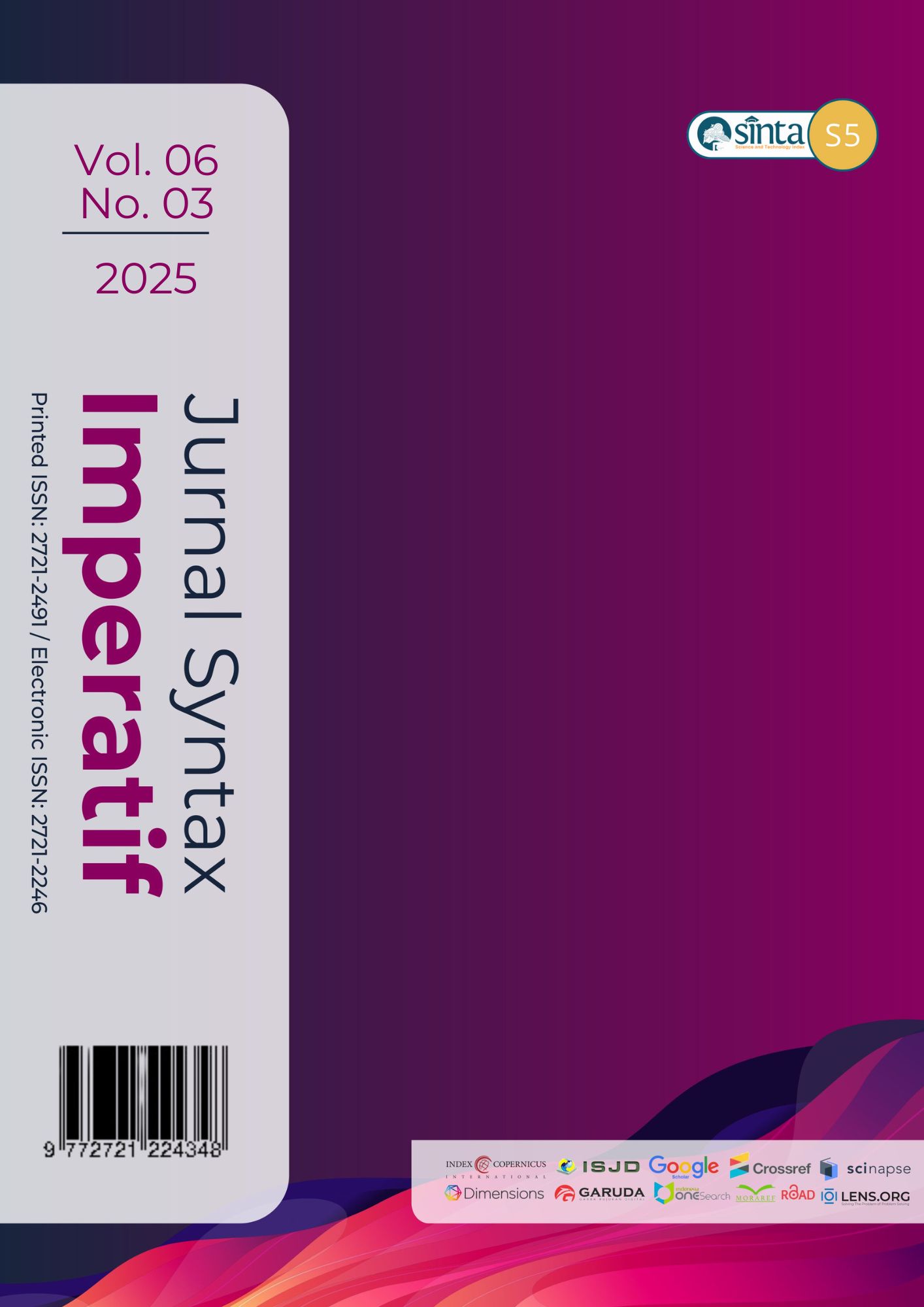The Dynamics of Conflict, Asymmetric Access, and Governance Transparency in Bima’s Annual Public Land Leasing Policy
DOI:
https://doi.org/10.54543/syntaximperatif.v6i3.711Keywords:
Conflict Dynamics, Asymmetric Access, Public Land Leasing, Land Policy.Abstract
This study aims to critically examine the tensions embedded within stakeholder relations in the implementation of the annual leasing policy of former collateral land previously held by village officials in Bima Regency—an initiative intended to optimize Local Own-Source Revenue (PAD), yet one that has instead given rise to complex social, political, and ecological ramifications. Employing a qualitative case study approach and in-depth interviews with key actors including government officials, local residents, auction participants, and community leaders this research reveals that the policy’s execution is fraught with non-transparent practices, conflicts of interest, and structural inequities in access to resources. Findings indicate that the land auction process is frequently marred by suspicions of winner manipulation, where the highest bids are overlooked, thereby exacerbating economic disparities and eroding public trust in local governance. Paradoxically, although the policy was conceived to enhance agricultural access for the underprivileged, empirical evidence suggests that economically dominant groups disproportionately reap its benefits. Furthermore, the short-term leasing model incentivizes unsustainable land use, contributing to soil degradation and undermining long-term local food security. This study underscores the critical need for policy reformulation grounded in principles of distributive justice, the strengthening of oversight mechanisms, and the inclusive engagement of communities in policy design and evaluation processes. Ultimately, the study not only highlights the urgency of establishing equitable and accountable public land governance but also offers a theoretical reflection on how localized resource conflicts mirror broader power asymmetries in Indonesia’s public policy landscape.
References
Adenuga, A. H., Jack, C., & McCarry, R. (2021). The case for long-term land leasing: A review of the empirical literature. Land, 10(3), 1–21. https://doi.org/10.3390/land10030238
Alting, H. (2011). http://doi.org/10.25273/citizenship.v6i1.1880Konflik Penguasaan Tanah Di Maluku Utara: Rakyat Versus Penguasa Dan Pengusaha. Jurnal Konstitusi, II(2), 266–282.
Anas, S., Dewi, S. F., & Indrawadi, J. (2019). Faktor Penyebab Konflik Tanah Ulayat Antara Peladang Pendatang Vs Masyarakat Adat Di Desa Tamiai Kabupaten Kerinci. Jurnal Sosiologi Reflektif, 14(1), 131–150. https://doi.org/10.14421/jsr.v14i1.1702
Daudelin, J. (2003). Land and Violence in Post-Conflict Situations. September, 34.
Deininger, K. (2004). Land Policies and Land Reform. World Bank.
Deininger, K., & Binswanger, H. (1999). The evolution of the World Bank’s land policy: Principles, experience, and future challenges. World Bank Research Observer, 14(2), 247–276. https://doi.org/10.1093/wbro/14.2.247
Gebeyehu Admasu, T. (2015). Urban land use dynamics, the nexus between land use pattern and its challenges: The case of Hawassa city, Southern Ethiopia. Land Use Policy, 45(March), 159–175. https://doi.org/10.1016/j.landusepol.2015.01.022
Hanum, E. R. (2017). Dinamika Konflik Tanah Timbul Di Pulau Sarinah Kabupaten Sidoarjo. Jurnal Politik Indonesia, 2(1), 135–142.
Janvry, A. De, Platteau, J.-P., Gordillo, G., & Sadoulet, E. (2011). Access to Land and Land Policy Reforms. Access to Land, Rural Poverty, and Public Action, 1–26. https://doi.org/10.1093/acprof:oso/9780199242177.003.0001
Myyrä, S. (2009). Land leasing, land degradation and agricultural productivity in Finland.
Onguny, P., & Gillies, T. (2019). Les Cahiers d’Afrique de l’Est / The East African Review Land Conflict in Kenya: A Comprehensive Overview of Literature Land Conflict in Kenya: A Comprehensive Overview of Literature. January 2020.
Otieno, D. J., & Oluoch-Kosura, W. (2019). Assessment of local stakeholders’ preferences for foreign land lease design attributes in Kenya: A participatory choice-based survey approach. Heliyon, 5(10), e02730. https://doi.org/10.1016/j.heliyon.2019.e02730
Wang, J., Lin, Y., Glendinning, A., & Xu, Y. (2018). Land-use changes and land policies evolution in China’s urbanization processes. Land Use Policy, 75(April), 375–387. https://doi.org/10.1016/j.landusepol.2018.04.011
Wirawan, V., Berkah, K., Property, K., Jenderal, U., Yani, A., & Yogyakarta, D. I. (2021). Rekonstruksi Politik Hukum Penyelesaian. Jurnal Hukum Progresif, 9(1), 1–15.
Wondimu, T., & Gebresenbet, F. (2018). Resourcing land, dynamics of exclusion and conflict in the Maji area, Ethiopia. Conflict, Security and Development, 18(6), 547–570. https://doi.org/10.1080/14678802.2018.1532644
Downloads
Published
How to Cite
Issue
Section
Citation Check
License
Copyright (c) 2025 Yuli Yanti Daaris

This work is licensed under a Creative Commons Attribution-ShareAlike 4.0 International License.










